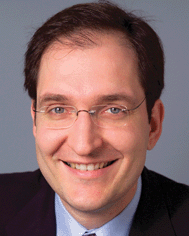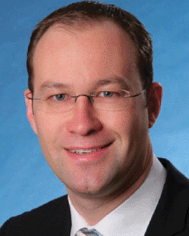Glycochemistry and glycobiology: a web themed issue
Peter H.
Seeberger
a and
Daniel B.
Werz
b
aMax Planck Institute of Colloids and Interfaces, Department of Biomolecular Systems and Free University, Department of Chemistry, Arnimallee 22, 14195 Berlin, Germany. E-mail: peter.seeberger@mpikg.mpg.de
bInstitute for Organic and Biomolecular Chemistry, Georg August University of Göttingen, Tammannstr. 2, 37077 Göttingen, Germany. E-mail: dwerz@gwdg.de
 Peter H. Seeberger | Peter H. Seeberger is Managing Director of the Max Planck Institute for Colloids and Surfaces in Potsdam Germany, Professor at the Free University of Berlin, Honorary Professor at Potsdam University and Affiliate Professor at the Sanford-Burnham Institute for Medical Research in La Jolla, USA. He is broadly interested in the areas of chemistry and biology with a particular focus on the glycosciences. |
 Daniel B. Werz | Daniel B. Werz is currently Emmy Noether Assistant Professor at the University of Göttingen, Germany. His research focuses on carbohydrate chemistry, carbohydrate mimetics and the development of novel synthetic methods for organic synthesis. |
More than 100 years ago, the second Nobel Prize in Chemistry was awarded to Emil Fischer. Today every student knows about his brilliant logical deduction of the stereochemistry of glucose, one of the first milestones in carbohydrate chemistry. For the following decades carbohydrates were only studied with respect to their role in energy storage and supply. It actually took until the 1980s for chemists to start to develop methods to assemble complex oligosaccharides. This was the prerequisite to elucidating their function in numerous biological recognition processes. A variety of methods to access complex glycans are available today and set the stage for the biological, biochemical and biophysical investigation of oligosaccharides and respective glycoconjugates.
The communications collected in this web themed issue can only serve as an appetizer to plunge into the field. Nevertheless, they cover important up-to-date questions of glycochemistry and glycobiology. Starting with monosaccharides and their modifications, the contributions forge a bridge between synthetic challenges, total syntheses, molecular interactions and questions dealing with chemical biology. De novo syntheses of monosaccharides are described; issues of stereoselectivity and protecting groups are discussed. Total syntheses of complex glycans are in the focus, as well as carbohydrate mimetics, from either a synthetic or biological point of view. Carbohydrate-based microarrays, as well as methods for the elucidation of the conformational space of carbohydrates are reported.
All of these papers and other excellent contributions in this issue demonstrate a high level of activity in this field. Glycochemistry and glycobiology will be the cutting edge for future progress in biomolecular sciences. There is mounting evidence that our future will be a sweet one.
| This journal is © The Royal Society of Chemistry 2011 |
